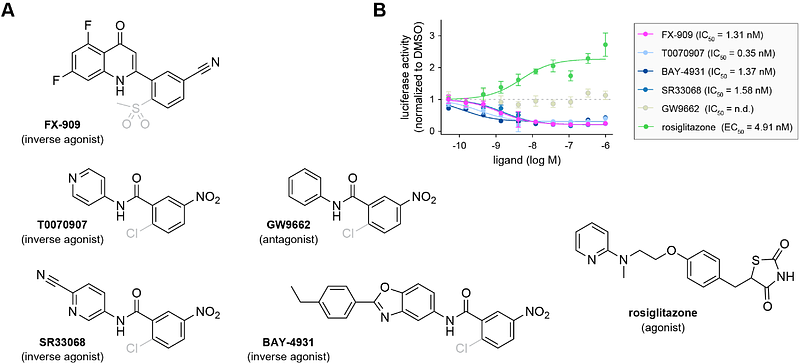Structural basis of PPARγ-mediated transcriptional repression by the covalent inverse agonist FX-909

Structural basis of PPARγ-mediated transcriptional repression by the covalent inverse agonist FX-909
Laughlin, Z. T.; Arifova, L.; Munoz-Tello, P.; Yu, X.; Dong, J.; Harp, J. M.; Zu, D.; Kamenecka, T. M.; Kojetin, D. J.
AbstractHyperactivation of peroxisome proliferator-activated receptor gamma (PPAR{gamma})-mediated transcription promotes tumor growth in urothelial (bladder) cancer, which can be inhibited by pharmacological compounds that repress PPAR{gamma} activity. FX-909 is a covalent PPAR{gamma} inverse agonist currently in phase 1 clinical trials for advanced solid malignancies including muscle-invasive bladder cancer. Here, we compared the mechanism of action of FX-909 to other covalent inverse agonists including T0070907, originally reported more than 20 years ago and misclassified as an antagonist, and two improved analogs, SR33068 and BAY-4931. Functional profiling and NMR studies reveal that FX-909 displays improved corepressor-selective inverse agonism and better stabilizes a transcriptionally repressive PPAR{gamma} LBD conformation compared to T0070907. The crystal structure of PPAR{gamma} LBD cobound to FX-909 and NCoR1 corepressor peptide reveals a repressive conformation shared by other covalent inverse agonists. These findings build on recent studies highlighting the pharmacological significance and clinical relevance of transcriptionally repressive PPAR{gamma} inverse agonists.